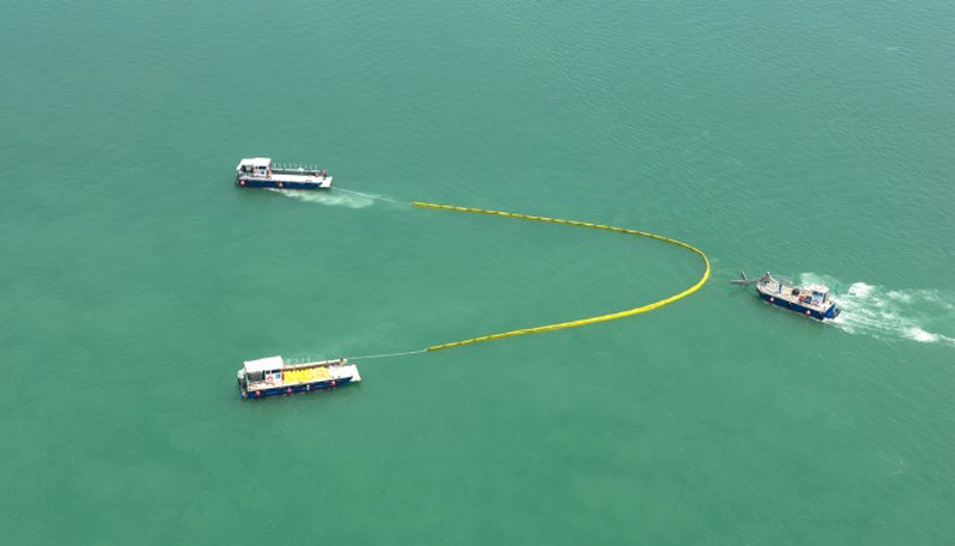
Marine vessels conduct a U-shape boom deployment during the recent simulated oil spill drill in Tarut Bay.
The Marine Department brought together more than 80 Saudi Aramco employees and contractors from eight different departments to participate in a simulated oil spill drill in Tarut Bay on April 27 and 28.
With the Marine Department leading the way, drills such as the one conducted in Tarut Bay demonstrate Saudi Aramco’s commitment to our core value of safety and stewardship of the Kingdom’s precious natural environment. By carrying out such drills, Saudi Aramco and its various departments are better prepared to handle a major environmental emergency if one should occur.
In addition, the drills are an opportunity to practice implementing the contingency plan developed for potential oil spills. Depending on the type and scope of the oil spill, the plan provides instructions to respond to such incidents in the quickest and safest manner.
Day 1: A Full-Scale Response
On Day 1 of the drill, response crews from Marine vessels Ain Dar 3 and Ain Dar 8 loaded up oil-containment booms at West Pier, and helicopters from the Aviation Department buzzed toward the simulated oil-spill site with pollution duty engineers assessing the situation.
The first briefing came at 9 a.m. to the assembled support team at the Emergency Command Center (ECC), the nerve center of the oil spill drill. For the purposes of the exercise, the drill was designed as a worst-case scenario: the release of 250 barrels of oil.
Throughout the first day, real efforts were made to combat the simulated threat. One layer of protection booms and skimmers was deployed in the spilled area to simulate the collection and capture of oil. Skimmers were deployed inside the boom to gather the oil, while smaller Marine boats (Mirsal-3, Nyasheen, Khutut Anabeeb, and Mirsal-2) assisted with booming operations.
Marine duty pollution engineers conducted surveillance overflights every two hours after the initial sighting, and shoreline surveillance was provided by representatives of the Environmental Protection Department (EPD) every two hours.
The key to success in this drill was notification and communication among the various departments, the ability to deploy people and equipment, and the know-how on where and when to deploy these resources. Regular briefings from the Marine Department’s regional oil spill response coordinator and from section chiefs for planning, operations, and logistics alerted participants to new emerging challenges that ranged from technical difficulties to drastic changes in weather.
Day 2: Cleaning Up

On Day 2, onshore protection and clean-up operations began while booms protected the mangrove area of Tarut Bay.
During the drill, there was real deployment of equipment and personnel to improve communication among oil-spill response team members and to enhance the skills of our spill responders. Moreover, the Marine Department’s ECC utilized best practices, such as the Incident Command System (ICS), which organizes the structure of the responding teams to streamline the coordination and communication. Additionally, the ECC used the Lifeline-Corporate Emergency Response Tool — which is an advanced mapping technology that shows the location of vessels in real time — oil mapping for trajectory modeling, and the Emergency Message Board to display the sequence of events to management.
At the end of Day 2, the Marine regional oil spill response coordinator announced to the assembled support departments that the drill was completed. Through the use of boat- and land-deployed booms, and aviation assets, the simulated oil spill had been contained and disaster had been averted. Meanwhile, the ICS had been fully utilized for oil-spill response to document all aspects of the spill.